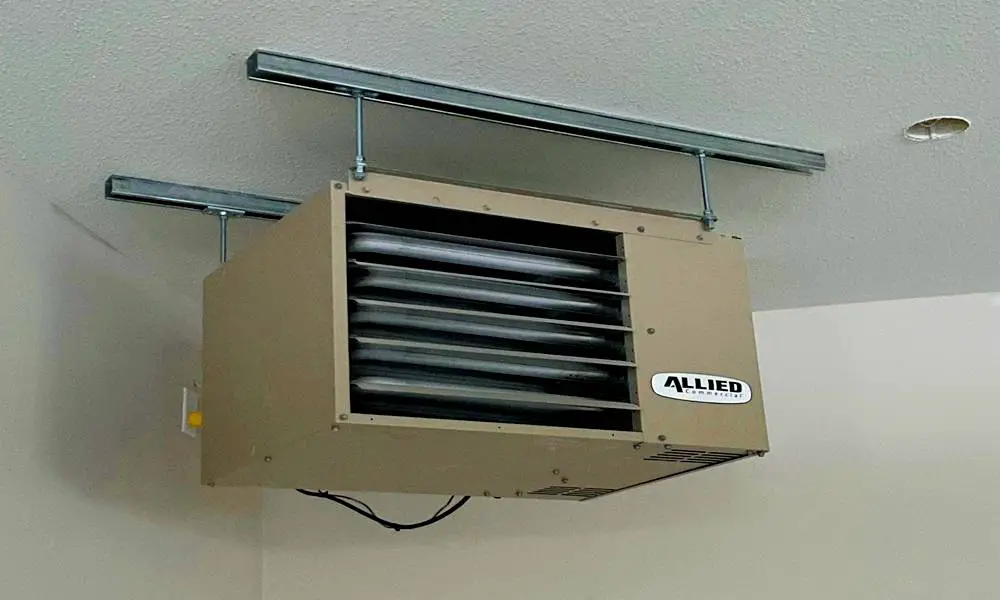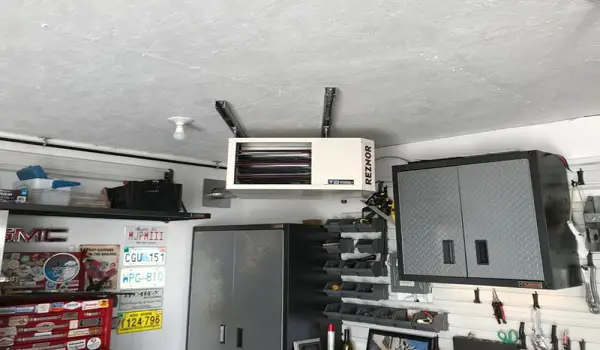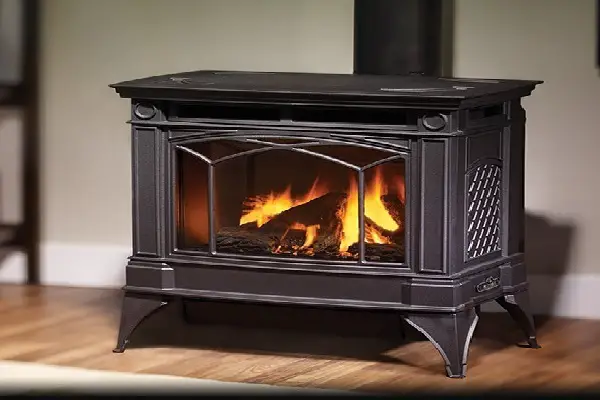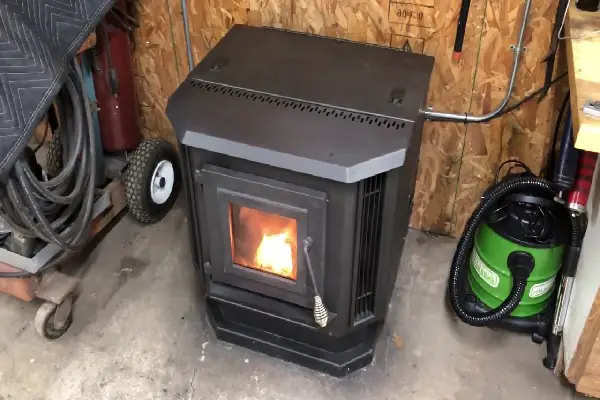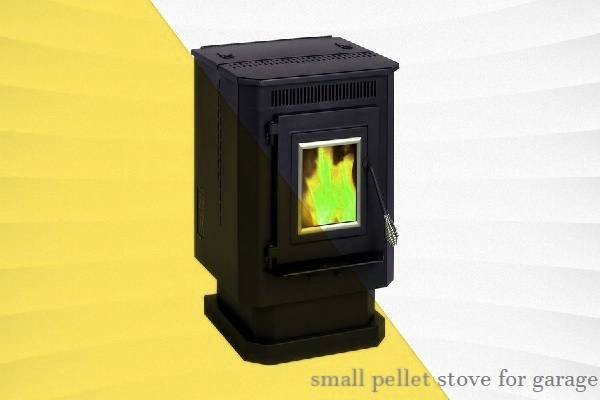Best Ways To Heat A Garage: Stay Warm and Cozy All Winter
Best Ways To Heat A Garage When the winter chill sets in, the garage can quickly become a frigid and […]
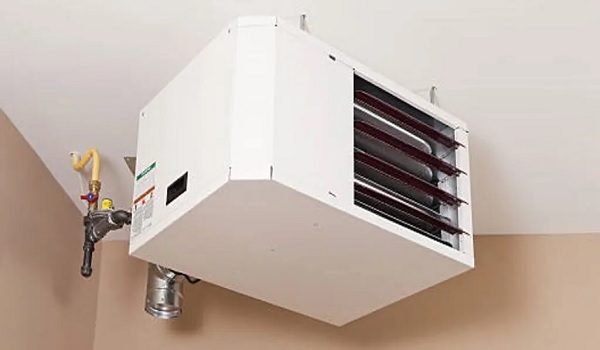
Best Ways To Heat A Garage
When the winter chill sets in, the garage can quickly become a frigid and unwelcoming space. Whether you use your garage for parking your car, as a workshop, a home gym, or simply for storage, finding effective ways to heat it is essential to make the most of this valuable space during the colder months. I’ll give you the 10 best ways to heat a garage, from high-efficiency heating systems to cost-effective portable options. Ultimately, you’ll have the knowledge needed to keep your garage warm and comfortable all winter long.
How can i heat my garage
Heating your garage can be essential for maintaining a comfortable environment, especially during cold weather. The method you choose to heat your garage will depend on your budget, the size of your garage, and your specific heating needs. Here are 10 common ways to heat your garage
The 10 Best Ways To Heat A Garage
1. Ductless Mini-Split Heat Pump

The ductless mini-split heat pump stands out as a beacon of efficiency when it comes to heating your garage. Unlike traditional heating systems, this technology offers targeted heating without the need for extensive ductwork. Let’s delve into the marvels of this innovation.
Ductless mini-split heat pumps operate on a simple principle: they consist of an outdoor compressor unit and one or more indoor air-handling units. The absence of ducts eliminates energy loss associated with traditional ducted systems, making it an energy-efficient choice for heating your garage.
Advantages:
- Energy Efficiency: Ductless mini-splits are highly energy-efficient due to their inverter compressors and variable-speed fans, resulting in significant energy bill savings.
- Zoned Heating and Cooling: These systems allow you to heat and cool different zones independently, making them ideal for multi-room garages or spaces with infrequent use.
- Easy Installation: Ductless mini-splits are relatively easy to install, even in existing structures, as they do not require ductwork, saving time and money.
- Quiet Operation: They operate quietly, making them suitable for bedrooms or areas where noise is a concern.
- Year-Round Comfort: Ductless mini-splits provide both heating and cooling, ensuring year-round comfort.
Disadvantages:
- Higher Upfront Cost: While they offer long-term savings, ductless mini-splits can have a higher initial cost compared to traditional systems.
- Limited Aesthetic Appeal: Some homeowners find the indoor units less attractive, so aesthetics may be a consideration.
- Professional Installation Required: Proper installation is crucial, and it must be done by a qualified HVAC professional.
When considering a ductless mini-split heat pump, be sure to review its SEER and HSPF ratings for energy efficiency, noise levels, and warranty coverage. Consult with an HVAC professional for personalized recommendations to ensure the right fit for your garage’s needs.
2. Determine Your Heating Needs
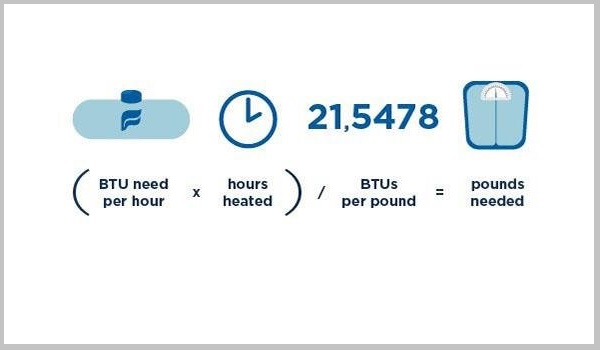
Understanding the unique heating requirements of your garage is the first step toward creating a warm and inviting space. We delve into the factors that influence the amount of heat your garage needs, guiding you through an informed decision-making process.
Start by assessing the size of your garage. Larger spaces may require more powerful heating solutions, while smaller garages can be adequately heated with less robust options. Consider the insulation levels in your garage as well; a well-insulated space retains heat more effectively, reducing the workload on your heating system.
Factors to Consider:
- Size of Your Garage: Larger garages will require more heating capacity.
- Climate Zone: Colder climates demand more heating power than warmer regions.
- Insulation: Well-insulated garages retain heat better and require less heating.
- Windows and Doors: Drafty or poorly sealed windows and doors can lead to heat loss.
- Occupancy: The number of people in your garage generates additional heat.
To estimate your heating needs, use an online heating calculator that considers all these factors, including the coldest and hottest days of the year. If uncertain, consult with an HVAC professional for guidance. Additionally, consider your budget, lifestyle, and get multiple estimates from HVAC contractors to find a system that suits your requirements and fits your financial plan.
3. Insulate Your Garage

Before embarking on the journey of selecting a heating system, it’s crucial to address the foundational aspect of garage comfort—insulation. Discover the importance of insulation and how it contributes to maintaining a cozy atmosphere within your garage.
Insulation acts as a barrier, preventing the escape of heat and the infiltration of cold air. In a garage setting, proper insulation is a game-changer. It not only enhances the efficiency of your chosen heating system but also reduces energy costs by minimizing heat loss.
When insulating your garage, focus on key areas such as walls, ceilings, and garage doors. Use insulation materials with high R-values, indicating their effectiveness in resisting heat flow. Fiberglass, foam board, and reflective foil are popular choices, each offering unique advantages depending on your insulation needs.
Benefits of Garage Insulation:
- Reduced Energy Bills: Proper insulation can lower your energy bills by keeping your garage cooler in summer and warmer in winter.
- Improved Comfort: A well-insulated garage is more comfortable for various uses, such as working on projects or storing your vehicle.
- Noise Reduction: Insulation helps reduce noise pollution from outside sources, enhancing your garage’s comfort.
- Increased Home Value: An insulated garage adds value to your property.
Garage insulation can be applied to walls, ceilings, and even floors, depending on your needs. Common insulation options include fiberglass batts, rigid insulation panels, and spray foam insulation. It’s crucial to use a vapor barrier to prevent moisture buildup and seal all air leaks around windows, doors, and other openings. Choose the appropriate insulation type and thickness based on your climate zone and insulation’s R-value. If unsure, consult with a professional contractor for guidance.
4. Window Heat Pump
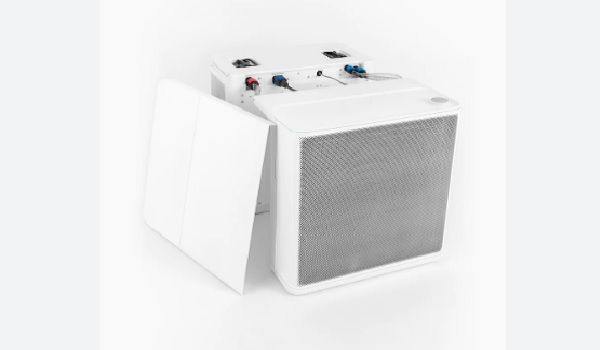
Explore the benefits of a window heat pump for efficient and space-saving heating in your garage. This section highlights the advantages and considerations when opting for this innovative solution. Window heat pumps, also known as window air conditioners with heating capability, offer a dual-functionality that is particularly useful in a garage setting. These units are designed to fit into a standard window frame, making them easy to install and an excellent option for those with limited space.
Advantages:
- Energy Efficiency: Window heat pumps are energy-efficient, reducing energy costs.
- Versatility: They can both heat and cool, offering year-round climate control.
- Easy Installation: Installing window heat pumps is relatively straightforward, and they don’t require ductwork.
- Affordability: They are generally more budget-friendly compared to other heat pump types.
Disadvantages:
- Limited Capacity: Window heat pumps may not be suitable for very large garages or extremely cold climates.
- Noise Level: Some models can be noisy, particularly at maximum capacity.
- Aesthetics: The appearance of window heat pumps may not appeal to all homeowners.
When choosing a window heat pump, consider the room size, SEER and HSPF ratings for efficiency, and read reviews to understand their pros and cons. Consulting an HVAC professional for personalized recommendations is advisable.
5. Portable Heat Pump
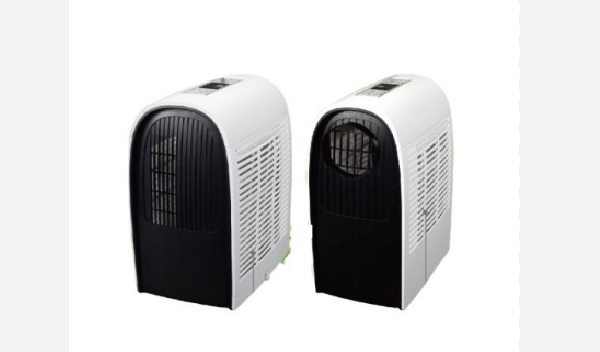
For those seeking flexibility in their garage heating solution, a portable heat pump might be the answer. Uncover the perks of this versatile heating option and how it caters to your specific needs.
Portable heat pumps, also known as space heaters, are compact, mobile units that can be moved around your garage as needed. This flexibility is particularly beneficial if your garage serves multiple purposes, and you require warmth in different areas at various times.
Advantages:
- Energy Efficiency: Portable heat pumps are energy-efficient, leading to cost savings.
- Versatility: They can heat and cool, providing year-round functionality.
- Easy Installation: These units are easy to set up, as they don’t require ductwork.
- Affordability: Portable heat pumps are often more budget-friendly than other heat pump options.
Disadvantages:
- Limited Capacity: They may not effectively heat very large garages or homes in extremely cold regions.
- Noise Level: Some portable models can be noisy when operating at full capacity.
- Aesthetics: The appearance of portable heat pumps may not suit all homeowners.
When selecting a portable heat pump, consider the room size, SEER and HSPF ratings, and read reviews to gauge their performance. Consulting with an HVAC professional ensures you choose the right unit for your specific needs.
6. Radiant Floor Heating

Discover the luxury of radiant floor heating and why this underfoot heating method is gaining popularity. In this section, we discuss the benefits of radiant floor heating and how it transforms your garage into a warm haven. Radiant floor heating involves installing heating elements beneath the floor surface, allowing heat to radiate upward and warm the room evenly. In a garage setting, this method offers several advantages that contribute to a comfortable and cozy environment.
Benefits of Radiant Floor Heating:
- Energy Efficiency: Radiant floor heating is highly energy-efficient, as it heats objects directly instead of the air.
- Comfort: It offers superior comfort as it provides even heating and reduces drafts.
- Health Benefits: Radiant heat doesn’t circulate dust and allergens, improving air quality and reducing moisture levels that can prevent mold growth.
- Safety: Radiant floor heating is safe, with no exposed heating elements and built-in thermostats for overheating prevention.
Disadvantages:
- Cost: Radiant floor heating can have a higher initial cost compared to traditional heating systems.
- Installation: Professional installation is essential.
- Slow to Heat Up: Radiant floor heating may take longer to reach the desired temperature compared to convection heating systems.
Radiant floor heating systems come in two main types: hydronic (using hot water) and electric. Consider your home’s size, budget, and insulation levels when choosing a system. Reading reviews and consulting with professionals will help you make an informed decision.
7. Efficient Heating with Electric Ceiling Panels
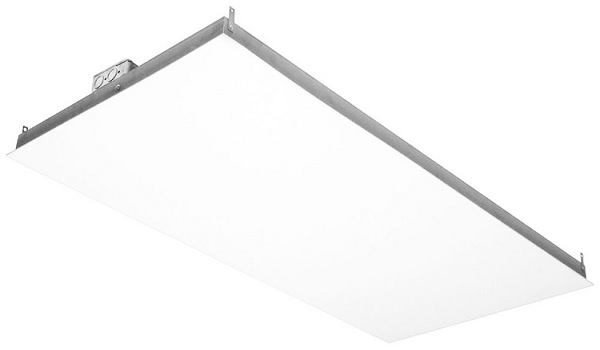
Maximize space and efficiency in your garage with electric ceiling panels. Learn about their installation, benefits, and why they are an excellent choice for garage heating. Electric ceiling panels, also known as radiant ceiling panels, are a sleek and modern heating solution that offers efficient warmth without taking up valuable floor space. These panels are typically installed on the ceiling and emit radiant heat downward, providing a comfortable environment throughout the garage.
Benefits of Electric Ceiling Panels:
- Energy Efficiency: These panels are energy-efficient, reducing heating costs.
- Comfort: Radiant heat from the ceiling provides even warmth, enhancing comfort.
- Health Benefits: Electric ceiling panels reduce dust circulation and help maintain appropriate humidity levels.
- Safety: They are safe, with no exposed heating elements and built-in thermostats for safety.
Disadvantages:
- Cost: Electric ceiling panels can be more expensive to purchase and install than some traditional heating systems.
- Ceiling Height: They require a minimum ceiling height of 8 feet.
- Installation: Professional installation is necessary.
When choosing electric ceiling panels, consider the room size, wattage, and read reviews to understand their performance. Consulting with an electrician ensures proper installation and personalized recommendations.
8. Stay Toasty with a Space Heater
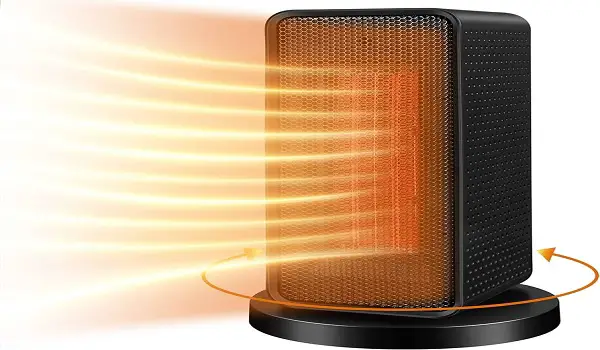
Space heaters, a classic choice for heating smaller areas, provide reliable warmth in a compact package. Dive into the world of space heaters, exploring different types and their suitability for garage use. Space heaters are versatile and come in various types, each catering to specific heating needs. When choosing a space heater for your garage, consider factors such as the size of the space, insulation levels, and your preferred heating method.
Convection heaters, radiant heaters, and fan-forced heaters are among the common types of space heaters. Convection heaters circulate warm air throughout the room, radiant heaters emit heat directly to objects and people, and fan-forced heaters use a fan to distribute heated air quickly.
Electric Space Heaters:
- Advantages: They are affordable, easy to use, and safe when used properly.
- Disadvantages: Some models can be less efficient, and they may pose a fire hazard if not used correctly.
Gas Space Heaters:
- Advantages: More efficient than electric space heaters.
- Disadvantages: Produce carbon monoxide, require proper ventilation, and may be more expensive to operate.
Kerosene Space Heaters:
- Advantages: Highly efficient in heating.
- Disadvantages: Emit fumes that can irritate the eyes and nose.
When selecting a space heater, consider the type of fuel, room size, safety features, and your budget. Follow safety guidelines, place them on a stable surface, away from flammable materials, and never leave them unattended when in use.
9. Wall-Mounted Electric Heater
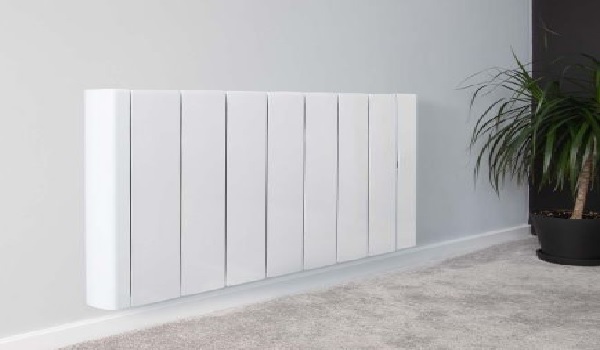
Enhance the aesthetic appeal of your garage while keeping it warm with wall-mounted electric heaters. Find out why these heaters are both stylish and functional. Wall-mounted electric heaters combine form and function, providing efficient heating while adding a touch of style to your garage. These heaters are mounted directly on the wall, saving valuable floor space and creating a sleek and modern look.
Benefits of Wall-Mounted Electric Heaters:
- Energy Efficiency: They are energy-efficient and provide even heating.
- Comfort: Wall-mounted heaters offer superior comfort, thanks to radiant heating.
- Safety: They are safe with no exposed heating elements and built-in thermostats.
- Ease of Installation: These heaters are relatively easy to install, either by an electrician or a knowledgeable homeowner.
Disadvantages:
- Cost: They can be more expensive than some traditional heating options.
- Wall Space Required: Installation requires wall space.
- Limited Heating Capacity: They may not effectively heat very large rooms or extremely cold spaces.
Select a wall-mounted electric heater based on room size, wattage, and read reviews for performance insights. Consulting an electrician ensures proper installation and personalized recommendations.
10. Choosing the Right Convection Heater
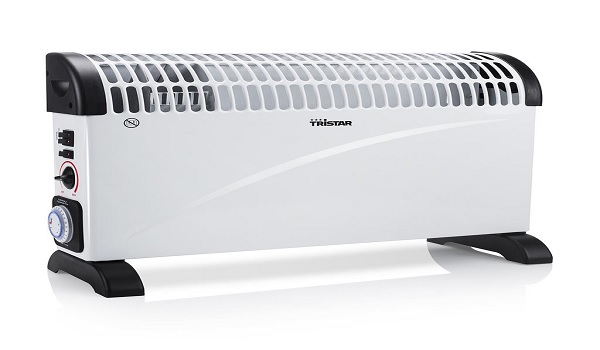
Not all convection heaters are created equal. We guide you through the process of selecting the right convection heater for your garage, ensuring optimal warmth. Convection heaters are a popular choice for providing consistent and even heating in enclosed spaces like garages. With various models available, choosing the right convection heater requires consideration of several factors to ensure it meets your specific needs.
Advantages:
- Affordability: Convection heaters are budget-friendly.
- Ease of Use: They are easy to operate and maintain.
- Portability: These heaters can be moved between rooms.
Disadvantages:
- Efficiency: Convection heaters may use more energy compared to radiant heaters or heat pumps.
- Uneven Heating: They can produce uneven heating, with areas closer to the heater being warmer than distant areas.
- Dry Air: Convection heaters can dry out the air, potentially causing discomfort and irritations.
When using convection heaters, ensure they are on a stable, level surface and away from flammable materials. Never leave them unattended while in use and turn them off when not needed.
How to Choose the Best Garage Heater for Your Needs
Selecting the right garage heater is a crucial decision that hinges on several key factors. To make an informed choice, consider the following aspects:
1. Fuel Type
The first consideration when choosing a garage heater is the fuel type. There are various options available, including electric, natural gas, propane, kerosene, and even wood-burning heaters. Each fuel type has its advantages and drawbacks.
- Electric Garage Heaters: Electric heaters are a popular choice due to their efficiency and ease of use. They are clean, produce no emissions, and require minimal maintenance. If you have access to electricity, this is often a convenient option.
- Gas Garage Heaters: Gas heaters, including natural gas and propane, can be more cost-effective in the long run, especially if you have a ready supply of natural gas. They provide quick, efficient heating and are suitable for larger garages. However, they require proper venting to ensure safety.
- Kerosene and Wood Heaters: These options may be suitable for off-grid or remote locations but come with safety considerations and may produce indoor air quality issues.
2. Garage Size and Insulation
Consider the size of your garage and its level of insulation. Larger garages require more heating power, while well-insulated ones retain heat better. Make sure to measure the square footage of your garage to determine the heater’s capacity needed.
3. Safety Features
Safety should be a top priority when selecting a garage heater. Look for models that include the following safety features:
- Overheat Protection: This feature automatically shuts off the heater if it reaches a dangerously high temperature, preventing fire hazards.
- Thermostat: A built-in thermostat helps maintain a consistent temperature and prevents the heater from running excessively.
- Tip-Over Protection: This safety feature shuts off the heater if it tips over, reducing the risk of accidents.
- Oxygen Depletion Sensor (ODS): Common in gas heaters, an ODS monitors oxygen levels and shuts off the heater if they drop to a dangerous level.
4. Convenience Features
Consider additional features that enhance convenience and ease of use:
- Remote Control: Some garage heaters come with remote controls, allowing you to adjust settings from a distance.
- Programmable Thermostat: A programmable thermostat enables you to set heating schedules, saving energy when the garage is not in use.
- Portability: Portable heaters are versatile and can be moved where needed.
How to Install a Garage Heater
Proper installation of a garage heater is essential for safety and efficiency. Here are the steps to install a garage heater:
- Determine Location: Choose the optimal location for the heater, considering clearance from combustible materials and proper ventilation for gas heaters.
- Check Electrical Capacity: If installing an electric heater, ensure that your electrical system can handle the load. You may need to upgrade your electrical panel or circuit.
- Gas Connections: If installing a gas heater, consult a professional for gas line connections and venting requirements. This step is crucial to prevent carbon monoxide buildup.
- Mounting or Placement: Follow the manufacturer’s instructions to securely mount the heater or position it correctly.
- Electrical Wiring: For electric heaters, connect the wiring following local electrical codes. Hire a licensed electrician if necessary.
- Test the Heater: Once installed, test the heater to ensure it operates correctly and heats the space effectively.
How to Use a Garage Heater Safely
Safety is paramount when using a garage heater. Follow these safety guidelines:
- Keep Flammable Materials Away: Maintain a safe distance between the heater and any flammable materials, such as paper, cardboard, gasoline, or propane tanks.
- Never Leave Unattended: Avoid leaving the heater unattended while it’s running.
- Check for Damage: Regularly inspect the heater for signs of damage or wear, including frayed cords, damaged plugs, or cracked casings.
- Clean and Replace Filters: Clean or replace air filters according to the manufacturer’s recommendations to ensure proper airflow and efficiency.
Maintenance Tips for Garage Heaters
Regular maintenance is essential to keep your garage heater operating efficiently and safely:
- Clean or Replace Filters: Keep air filters clean or replace them as directed to maintain good airflow.
- Inspect Electrical Connections: Periodically check the electrical connections for any loose or damaged wires.
- Lubricate Moving Parts: If your heater has moving parts, such as a fan, lubricate them as specified in the user manual to prevent friction and wear.
- Schedule Professional Inspections: Consider scheduling annual or biannual professional inspections to catch potential issues early and ensure safe operation.
Troubleshooting Common Garage Heater Problems
If you encounter issues with your garage heater, troubleshooting can help identify and resolve problems:
- Thermostat Malfunctions: Check the thermostat settings and batteries. If the thermostat is faulty, consider replacing it.
- Clogged Filters: Reduced airflow due to clogged filters can decrease heating efficiency. Clean or replace filters as needed.
- Ignition Problems: For gas heaters, ignition issues may require professional service to inspect and repair the ignition system.
Always refer to your heater’s manual for specific troubleshooting steps and consult a professional if you are unsure how to address a problem.
Conclusion
Heating your garage effectively is essential for maximizing its utility during the winter months. Whether you opt for a high-efficiency ductless mini-split heat pump, a versatile window or portable heat pump, the comfort of radiant floor heating, or the convenience of space heaters, there’s a solution to fit your needs and budget. Ensure you assess your garage’s specific heating requirements, insulate it to retain warmth, and consider the various heating options available.
Safety should always be a priority, with proper installation and maintenance being key factors in keeping your garage warm and safe. By choosing the best way to heat your garage, you can transform it into a cozy and functional space, whether you’re working on projects, exercising, or simply enjoying your winter hobbies. Stay warm, and make the most of your garage space all year round.
Remember that the “Best Ways To Heat A Garage” are as varied as the garages themselves. Evaluate your specific needs, budget, and preferences to select the solution that suits you best.
